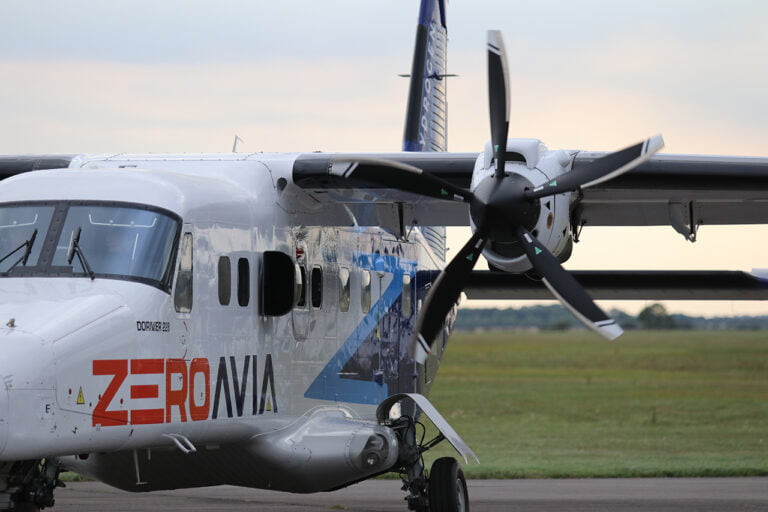The airfreight industry faces a daunting challenge: reducing its significant carbon footprint while meeting the growing demand for global air cargo transport. ZeroAvia is seeking to achieve this through developing hydrogen-electric engines for zero-emission flights.
“We have a clear technology roadmap as an engine OEM, focused on developing solutions that align with existing engine platforms and can scale over time,” James Peck, Chief Customer Officer of ZeroAvia, stated.
“Our first engine is designed as a replacement for the Pratt & Whitney Canada PT6 engine, which allows us to quickly deliver a system capable of matching that power output.
“We chose to focus on this engine first because the technology is already quite mature, enabling us to concentrate on infrastructure and the certification process with the authorities, and start with the Cessna Caravan, a PT6 aircraft because it was a good fit for our initial engine.”
Changing perceptions
Hydrogen is still very new to aviation authorities, which is part of why the certification process has been slower than ZeroAvia would like.
The Civil Aviation Authority (CAA) is particularly cautious because they don’t yet fully understand how hydrogen will perform in flight. As a result, ZeroAvia has had to build in extensive protective measures.
“We’ve been working for years to educate the aviation authorities on how this technology performs in real-world conditions and to demonstrate its safety and reliability,” Peck stated.
“Hydrogen is actually much safer than I initially thought. It’s less volatile than jet fuel and disperses quickly because it’s the lightest element. The main risk is if hydrogen gets into a confined space and mixes with oxygen—that’s when it becomes flammable.
“But as long as we keep it separate from pressurised areas and handle it properly, we can avoid dangerous situations. In contrast, jet fuel is highly explosive and always stored in the wings, which is something we’ve all come to accept as normal.
“Our system has a lot of built-in redundancy. For example, the motor has four separate stators; it can lose one and still run. The same goes for the four separate banks of inverters and the fuel cell stacks—we can lose one and still maintain operation.
“This level of redundancy is far greater than what you get with a turbine engine. If you lose a turbine, the engine shuts down, and that’s it. Having sold turbine engines for 30 years, I can confidently say that our hydrogen system offers inherent safety advantages in terms of reliability.”
Phased approach
Cessna Caravans are widely used as feeder aircraft for cargo, particularly across North America. Companies like FedEx and UPS operate large fleets of these Caravans to transport goods from remote airports to main hubs. This makes the Caravan a great fit for this project because these routes are relatively simple and operate on a hub-and-spoke model.
“Converting a turboprop aircraft is much easier because it uses an electric motor that attaches to a propeller, effectively replicating the thrust you get with a fan engine,” Peck explained.
“With a fan engine, you’re also getting significant thrust from the core, which is lost when you switch to electric. To compensate, you either need a larger diameter fan or more engines. This is why starting with turboprops made sense for us—it guided our choice of aircraft.”
Beyond the Cessna Caravan, ZeroAvia’s next step involves the development of a two-megawatt-plus system for ATR-sized aircraft. ASL, a company that is equally committed to clean aviation, became very interested in this because the ATR is the smallest aircraft they operate, making it their earliest opportunity to achieve zero emissions.
“Our strategy focuses on retrofitting existing aircraft, primarily because it allows for a faster time to market,” Peck outlined. “While we have partnerships with both clean-sheet and existing airframe manufacturers, replacing the global fleet with brand-new aircraft would take years, if not decades. Retrofitting, on the other hand, enables us to deploy our technology on a large scale quickly, making it accessible to operators sooner.
“Looking ahead, our roadmap sees the Cessna Caravan entering service in 2027, followed by the ATR around 2028.”





